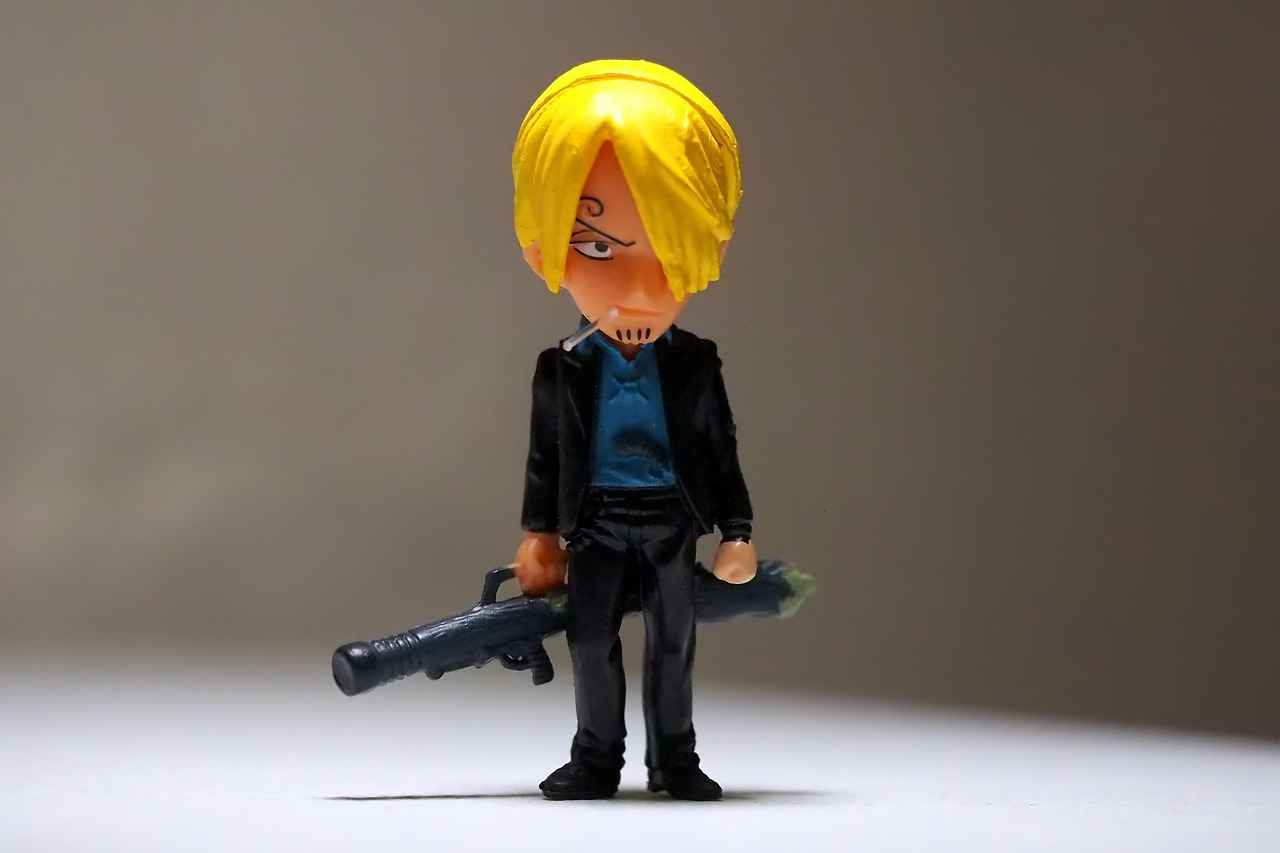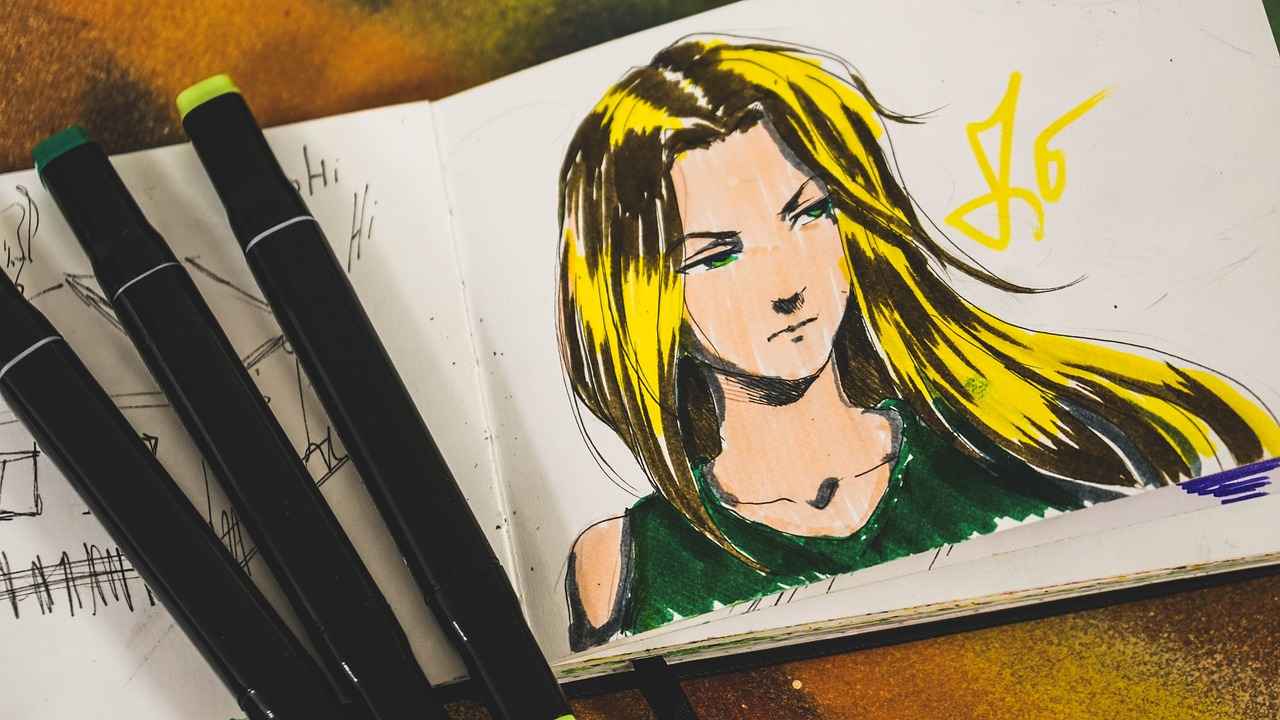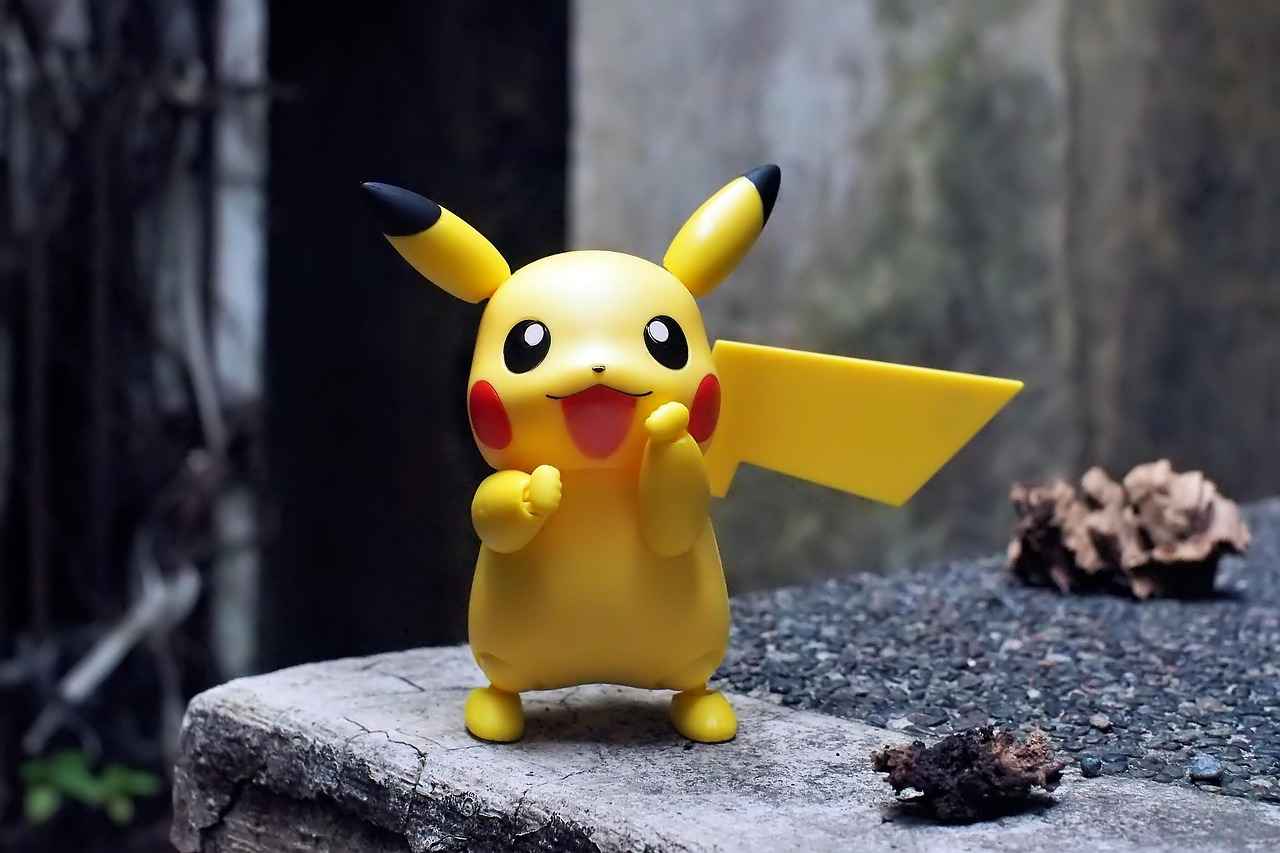This article delves into the fascinating world of time travel in anime, highlighting key series that creatively explore this concept and engage viewers with their unique storytelling. Time travel has become a captivating theme in anime, offering audiences a blend of adventure, emotional depth, and philosophical questions about the nature of time itself.
- Steins;Gate: A Masterclass in Time Travel
Often regarded as a pinnacle of time travel storytelling, Steins;Gate intricately weaves science fiction with profound emotional narratives. The series follows a group of friends who discover a method to send messages to the past, leading to unexpected consequences that challenge their understanding of reality.
- The Melancholy of Haruhi Suzumiya: A Unique Twist on Time Travel
This series presents time travel through an unconventional lens, where Haruhi’s subconscious abilities create a narrative that constantly blurs the lines between reality and imagination. The character dynamics and development are central to the story, showcasing the impact of time manipulation on relationships.
- Re:Zero – Starting Life in Another World: Time Loops and Consequences
Re:Zero introduces a darker perspective on time travel, where the protagonist, Subaru, can return to life at a specific point upon death. This unique mechanic explores despair and resilience, emphasizing emotional stakes and the psychological toll of reliving traumatic events.
- Your Name: A Beautiful Blend of Romance and Time Travel
Your Name masterfully intertwines romance and time travel through body-swapping, allowing characters to connect across time and space. The film’s stunning visuals and symbolic storytelling deepen the emotional impact, prompting viewers to reflect on fate and destiny.
- The Girl Who Leapt Through Time: A Coming-of-Age Journey
This film combines time travel with a coming-of-age narrative, focusing on a young girl who learns to navigate her newfound abilities. The consequences of her actions significantly affect her relationships, delivering poignant life lessons about choices and the passage of time.
- Future Diary: A High-Stakes Game Across Time and Space
Future Diary presents a thrilling blend of survival and time manipulation, where characters use prophetic diaries to navigate a deadly game. The psychological implications of their abilities create intense drama, keeping viewers engaged with numerous plot twists and complex character arcs.
In conclusion, these anime series not only entertain but also provoke thought about the implications of time travel. Each show offers a unique perspective, inviting viewers to ponder the complexities of time, relationships, and personal growth. Whether through emotional storytelling or thrilling plot twists, the exploration of time travel in anime continues to captivate audiences around the world.

1. Steins;Gate: A Masterclass in Time Travel
Steins;Gate is widely regarded as a pinnacle of time travel anime, seamlessly blending elements of science fiction with profound emotional storytelling. The series captivates audiences with its intricate narrative, which intertwines the lives of its characters with the concept of time manipulation.
At its core, Steins;Gate follows the journey of Rintarou Okabe, a self-proclaimed mad scientist, who inadvertently discovers a method for sending messages to the past. This groundbreaking discovery sets off a chain of events that not only challenges the fabric of reality but also tests the limits of friendship and sacrifice. The emotional depth of the characters is enhanced by their struggles with the consequences of their actions, making each episode a rollercoaster of tension and introspection.
The series expertly explores the butterfly effect, illustrating how even the smallest changes in the past can lead to catastrophic results in the future. This theme resonates deeply with viewers, prompting them to consider the weight of their own choices. The character development is exceptional; as Okabe grapples with the moral implications of his time-traveling abilities, viewers witness his transformation from a carefree youth to a burdened individual faced with heart-wrenching decisions.
Moreover, the interactions among the diverse cast play a crucial role in the narrative. Each character brings their own unique perspective and emotional baggage to the story, enriching the overall experience. The friendships, rivalries, and romantic tensions create a vibrant tapestry that keeps audiences engaged and invested in the characters’ fates.
In conclusion, Steins;Gate is not just a time travel anime; it is a profound exploration of human emotions, relationships, and the consequences of our actions. Its masterful storytelling and character development ensure that it remains a standout series in the anime landscape, earning its place as a must-watch for fans of the genre.

2. The Melancholy of Haruhi Suzumiya: A Unique Twist on Time Travel
The Melancholy of Haruhi Suzumiya is a groundbreaking anime series that redefines the concept of time travel through a unique lens. Unlike traditional narratives that focus solely on the mechanics of time manipulation, this series delves into the psychological and existential implications of such powers. Haruhi Suzumiya, the enigmatic protagonist, possesses the ability to alter reality and time without even realizing it, leading to a fascinating exploration of what it means to exist in a world where the rules of time can be bent at will.
Character Dynamics and Development
The interactions among Haruhi and her friends, particularly Kyon, serve as the backbone of the storyline. As they navigate the unpredictable nature of Haruhi’s abilities, viewers witness significant character growth. The challenges posed by time travel not only test their friendships but also compel them to confront their own identities and desires. This dynamic adds depth to the narrative, making it resonate on multiple levels.
Haruhi’s Influence on Time Manipulation
Haruhi’s subconscious control over time creates a series of intriguing scenarios that challenge the characters’ perceptions of reality. Each episode reveals how her whims can lead to unexpected consequences, prompting viewers to ponder the fragility of time and existence. The unpredictability of her powers serves as a narrative device that keeps audiences engaged and invested in the unfolding drama.
Thematic Exploration of Time
At its core, The Melancholy of Haruhi Suzumiya invites viewers to reflect on profound themes such as existentialism and the consequences of manipulating time. The series prompts questions about the nature of reality and the choices we make, encouraging a deeper contemplation of our own lives. Haruhi’s journey is not just about time travel; it’s about understanding the impact of our actions and the connections we forge along the way.
In conclusion, The Melancholy of Haruhi Suzumiya stands out as an innovative exploration of time travel, blending humor, drama, and philosophical inquiry. Its unique approach challenges viewers to think critically about the nature of time and existence, making it a must-watch for any anime enthusiast.
Character Dynamics and Development
play a pivotal role in The Melancholy of Haruhi Suzumiya, as the interactions between Haruhi and her friends intricately weave the narrative fabric of the series. The story revolves around Haruhi’s unique abilities, which inadvertently trigger time travel, leading to profound changes in her relationships and individual growth.
As the series progresses, viewers witness how time travel acts as a catalyst for character development. Haruhi, with her vibrant personality and unpredictable nature, challenges her friends to confront their own limitations and aspirations. This dynamic creates a rich tapestry of interactions that highlight how time manipulation influences not only their friendships but also their personal journeys.
- Haruhi’s Charisma: Her magnetic personality draws in her friends, compelling them to engage in adventures that test their bonds.
- Conflict and Resolution: Time travel introduces conflicts that require the characters to resolve misunderstandings and grow closer, showcasing the importance of communication and trust.
- Individual Arcs: Each character experiences unique growth influenced by Haruhi’s whims, leading to self-discovery and enhanced relationships.
Moreover, the series delves into how these time-altering experiences shape the characters’ perceptions of reality. For instance, Kyon, the reluctant protagonist, often finds himself caught between Haruhi’s fantastical world and his own pragmatic views. His development is marked by his gradual acceptance of the extraordinary, leading to a deeper understanding of his feelings towards Haruhi and the group.
In conclusion, the interactions among Haruhi and her friends serve as a compelling exploration of character dynamics and development. The influence of time travel not only enriches the storyline but also fosters significant personal growth, making the series a profound examination of friendship, identity, and the complexities of human relationships.
Haruhi’s Influence on Time Manipulation
delves into the captivating dynamics of her character and the profound effects her subconscious abilities have on the narrative of The Melancholy of Haruhi Suzumiya. At the core of this series lies Haruhi’s extraordinary power, which allows her to manipulate reality and time without her conscious awareness. This unique trait creates a rich tapestry of scenarios that challenge the characters and the audience’s understanding of time itself.
Throughout the series, Haruhi’s whims and desires inadvertently shape the world around her. Her character acts as a catalyst, creating intriguing scenarios that force her friends to confront their own realities. For instance, the time loops and alternate timelines not only drive the plot forward but also deepen the relationships among the characters, showcasing their growth and resilience in the face of Haruhi’s unpredictable nature.
The impact of Haruhi’s control over time extends beyond mere plot mechanics; it also raises significant questions about existentialism and the nature of free will. As the characters navigate the complexities of their existence, they grapple with the implications of Haruhi’s power. Are they merely pawns in her game, or do they possess the agency to shape their destinies? This philosophical inquiry enhances the viewing experience, prompting audiences to reflect on their own lives and choices.
Moreover, Haruhi’s influence is not limited to the main cast; it permeates the entire narrative, affecting the supporting characters in profound ways. Each character’s arc is intricately woven into the fabric of Haruhi’s reality, leading to unique developments that enrich the overall storyline. The interplay between Haruhi’s subconscious manipulation and her friends’ responses creates a dynamic that is both entertaining and thought-provoking.
In conclusion, Haruhi’s subconscious control over time serves as a powerful narrative device that transforms The Melancholy of Haruhi Suzumiya into a multifaceted exploration of character, reality, and the consequences of power. By examining these themes, viewers are invited to engage with the series on a deeper level, making it a standout in the realm of anime.
Impact on Supporting Characters
In the realm of time travel narratives, supporting characters often play pivotal roles that significantly enhance the overall storyline. Each character embarks on a unique journey shaped by their interactions with time travel, allowing for rich character development and exploration of their personalities.
For instance, in Steins;Gate, characters like Mayuri and Okabe undergo profound transformations as they grapple with the consequences of their time-altering actions. Mayuri, who embodies innocence and joy, faces the harsh realities of loss and sacrifice, which deepens her character. Okabe, on the other hand, evolves from a carefree scientist into a complex figure burdened by the weight of his choices, showcasing the emotional toll of time travel on relationships.
Similarly, in The Melancholy of Haruhi Suzumiya, supporting characters like Kyon and Yuki Nagato experience shifts in their identities as they navigate Haruhi’s unpredictable time manipulations. Kyon’s perspective on life and reality is challenged, prompting him to confront his own feelings and motivations. Yuki, initially a stoic character, reveals layers of depth as her interactions with time travel influence her understanding of human emotions.
Furthermore, in Re:Zero, characters such as Emilia and Rem are intricately woven into the narrative, with their arcs directly impacted by Subaru’s time loops. Emilia’s struggle with her identity and her connection to Subaru becomes more pronounced as he relives moments, while Rem’s character development highlights themes of loyalty and love amidst despair.
In conclusion, the impact of time travel on supporting characters is significant, as it not only enriches the narrative but also adds layers of complexity to their personalities. These unique arcs contribute to a more engaging and emotionally resonant storyline, inviting viewers to reflect on the nature of time and its influence on human connections.
Thematic Exploration of Time
The concept of time travel in anime is not merely a plot device; it serves as a profound medium for exploring existential themes and the ramifications of manipulating time. These narratives compel viewers to engage in introspection, questioning the very fabric of their realities.
In many series, time travel acts as a catalyst for character development. For instance, in Steins;Gate, the protagonist’s repeated attempts to alter the past lead to devastating consequences, not just for himself but for those around him. This illustrates the butterfly effect, where small changes can have monumental impacts, prompting viewers to consider how their own choices shape their lives.
Moreover, the series The Melancholy of Haruhi Suzumiya presents time travel through the lens of subjective reality. Haruhi’s subconscious control over time challenges the characters’ understanding of their existence and relationships, pushing them to confront their desires and fears. This invites the audience to reflect on how their perceptions of reality can be altered by their experiences and emotions.
Another poignant example is found in Re:Zero – Starting Life in Another World, where the protagonist’s ability to return to life upon death serves as a metaphor for resilience and despair. Each iteration teaches him valuable lessons about human connections and the weight of his decisions, encouraging viewers to contemplate the significance of their own choices and the potential for personal growth through adversity.
In summary, the exploration of time in anime transcends mere entertainment; it serves as a mirror reflecting the complexities of human existence. By delving into these themes, viewers are not only entertained but also invited to engage in a deeper understanding of their own realities.

3. Re:Zero – Starting Life in Another World: Time Loops and Consequences
Re:Zero – Starting Life in Another World takes a unique approach to the concept of time travel, presenting a narrative that is both captivating and harrowing. The protagonist, Subaru Natsuki, possesses the ability to return to a predetermined point in time upon his death, a mechanic that serves as both a blessing and a curse. This series delves deep into the themes of despair, resilience, and the psychological ramifications of reliving traumatic experiences.
Unlike many time travel stories that focus on altering events for a better outcome, Re:Zero emphasizes the emotional stakes involved in Subaru’s journey. Each death he experiences is not just a reset; it is a painful reminder of his failures and the lives he could not save. This narrative choice challenges viewers to consider the true cost of time manipulation.
As Subaru returns to life after each death, he gains invaluable insights and experiences that shape his character. This cycle of death and rebirth forces him to confront his fears, insecurities, and the consequences of his actions. The growth he undergoes is profound, illustrating how repeated experiences can lead to significant personal development.
Subaru’s ability to return to life also affects those around him, particularly Emilia and Rem. Their relationships evolve as Subaru’s actions ripple through time, leading to complex emotional dynamics. Each character’s arc is intricately tied to Subaru’s journey, showcasing how time travel can influence not just the protagonist but the entire narrative landscape.
At its core, Re:Zero is a story about overcoming despair and finding hope in the darkest of circumstances. Subaru’s struggles highlight the importance of resilience, as he learns to fight against overwhelming odds. The series prompts viewers to reflect on their own lives, encouraging a deeper understanding of perseverance in the face of adversity.
In conclusion, Re:Zero – Starting Life in Another World offers a thought-provoking exploration of time travel that goes beyond mere mechanics. It challenges traditional tropes and invites viewers to engage with its rich emotional landscape, making it a standout in the genre.
Subverting Time Travel Tropes
In the realm of anime, time travel is often portrayed as a thrilling adventure filled with paradoxes and fantastical scenarios. However, some series take a different approach, delving deeper into the emotional and psychological ramifications of manipulating time. One such series is Re:Zero – Starting Life in Another World, which stands out by subverting traditional time travel tropes.
Rather than focusing solely on the mechanics of time travel, Re:Zero emphasizes the emotional stakes involved in the protagonist’s journey. Subaru Natsuki, the main character, possesses the unique ability to return to a specific point in time upon his death. This ability, while seemingly advantageous, comes with a heavy psychological toll. Each time Subaru resets, he must relive the pain of loss and the burden of failure, which profoundly affects his mental state.
This narrative choice highlights the psychological toll of reliving traumatic moments, turning what could be a simple plot device into a profound exploration of despair and resilience. As Subaru navigates his challenges, viewers are drawn into a compelling story that showcases his growth and the emotional weight of his experiences. The series encourages audiences to consider how the ability to change the past might not necessarily lead to a happier future.
Furthermore, Re:Zero effectively illustrates how repeated experiences can lead to significant character development. Each reset allows Subaru to learn from his mistakes, making him more resourceful and determined. This growth is not just about survival; it reflects a deeper understanding of his relationships and the consequences of his actions, making the narrative both engaging and thought-provoking.
In conclusion, by subverting traditional time travel tropes, Re:Zero – Starting Life in Another World offers viewers a unique perspective on the complexities of time manipulation. It emphasizes the emotional stakes and psychological challenges that come with reliving moments, transforming the genre into a rich tapestry of human experience.
Character Growth Through Repetition
is a profound theme present in many narratives, particularly in anime that explore time travel. In series like Re:Zero – Starting Life in Another World, the protagonist, Subaru, experiences numerous iterations of his life, each time returning to a specific point after his demise. This cycle of death and rebirth not only serves as a plot device but also as a crucial element for character development.
As Subaru navigates the challenges of his repeated experiences, he undergoes significant personal growth. With each return, he learns valuable lessons about resilience, friendship, and the consequences of his choices. The emotional weight of his journey is palpable; viewers witness his struggles, failures, and eventual triumphs, which shape him into a more complex and relatable character.
Moreover, Subaru’s interactions with other characters evolve as he accumulates knowledge from his past lives. This growth is not just limited to him; it also affects those around him. His relationships deepen, and his understanding of their struggles enhances his empathy and decision-making. Each encounter becomes an opportunity for Subaru to apply what he has learned, illustrating how repeated experiences can profoundly influence one’s character.
In essence, the concept of highlights the importance of learning from past mistakes. It emphasizes that every setback is an opportunity for growth, making Subaru’s journey not just about survival, but about becoming a better version of himself. This theme resonates with viewers, encouraging them to reflect on their own lives and the lessons learned through their experiences.
In conclusion, Subaru’s journey in Re:Zero serves as a compelling narrative that showcases how repeated experiences can lead to significant character growth. His evolution is a testament to the idea that with each challenge faced, we have the potential to emerge stronger and wiser.

4. Your Name: A Beautiful Blend of Romance and Time Travel
Your Name is not just an ordinary anime; it is a breathtaking masterpiece that intricately weaves together the themes of romance and time travel. This film uses the unique narrative device of body-swapping to delve into the profound connections that can exist across different times and spaces. Through the experiences of its protagonists, Taki and Mitsuha, the story explores how their lives intersect in extraordinary ways, challenging the boundaries of time and reality.
The body-swapping mechanism serves as a powerful metaphor for understanding and empathy. As Taki and Mitsuha inhabit each other’s lives, they not only learn about one another’s daily struggles but also develop a deep emotional bond that transcends the limitations of time. This connection emphasizes the importance of communication and understanding in relationships, regardless of the distance that separates individuals.
Visually, Your Name is a feast for the eyes. The stunning animation, combined with symbolic elements such as the red thread of fate, enhances the storytelling. Each frame captures the essence of the characters’ emotions, making their journey relatable and poignant. The film’s visual storytelling not only entertains but also invites viewers to reflect on their own lives and relationships.
One of the most compelling aspects of Your Name is its exploration of fate and destiny. The film raises critical questions about the nature of connections made across time and how these bonds can influence the course of our lives. It invites viewers to ponder whether our paths are predetermined or if we have the power to shape our destinies through the choices we make.
In conclusion, Your Name is a beautiful blend of romance and time travel that resonates deeply with audiences. Its innovative narrative device of body-swapping not only serves to entertain but also prompts meaningful reflections on relationships and the impact of time. This film stands as a testament to the idea that love can transcend all barriers, making it a must-watch for any anime enthusiast.
Visual Storytelling and Symbolism
Visual storytelling and symbolism play a pivotal role in enhancing the narrative depth of many anime series, particularly those that explore complex themes like time travel. These elements not only captivate the audience visually but also serve to deepen their emotional connection to the characters and their journeys.
In anime such as Your Name, the use of stunning visuals is coupled with rich symbolism, allowing viewers to engage with the story on multiple levels. The breathtaking animation captures the beauty of the characters’ surroundings, while symbolic elements, like the intertwining of the two main characters’ lives through time and space, emphasize the profound connections that transcend physical and temporal boundaries.
Moreover, the symbolism found in the use of color, light, and even weather patterns often reflects the emotional states of the characters. For instance, a bright sunny day might signify hope and happiness, while a stormy night could represent turmoil and conflict. These visual cues guide the audience’s emotional responses, making their experience more immersive.
Additionally, the stunning visuals in anime often serve as a narrative device, enhancing the storytelling by illustrating the characters’ internal struggles and growth. For example, in Steins;Gate, the visual representation of time travel through intricate graphics and timelines not only showcases the complexity of the plot but also mirrors the characters’ emotional journeys as they grapple with the consequences of their actions.
Ultimately, the combination of visual storytelling and symbolism enriches the viewer’s experience, allowing them to not only witness the characters’ journeys but also feel their emotional depth. This intricate relationship between visuals and narrative is what makes anime a unique and compelling medium for storytelling.
The Role of Fate and Destiny
in anime often serves as a profound theme that resonates deeply with viewers. This concept invites audiences to reflect on the intricate web of choices and connections that shape their lives. In many anime series, characters grapple with the idea that their paths are predetermined, leading to intense emotional journeys.
One of the most captivating aspects of this theme is how it challenges the perception of free will. Characters often find themselves at a crossroads, where their decisions can alter the course of their lives and the lives of those around them. This dynamic creates a rich narrative tapestry, allowing viewers to explore the implications of their own choices.
- Connections Across Time: Many anime highlight the significance of relationships formed across different timelines or dimensions. For instance, in Your Name, the protagonists experience a profound bond despite being separated by time and space, emphasizing that connections can transcend the physical realm.
- Fate vs. Free Will: The struggle between destiny and personal choice is a recurring theme. Series like Steins;Gate delve into the consequences of altering time, prompting viewers to consider whether they can truly change their fate or if they are merely puppets of destiny.
- The Emotional Weight of Choices: Characters often face the emotional burden of their decisions, as seen in Re:Zero. Subaru’s repeated attempts to alter his fate lead to significant personal growth, highlighting the importance of resilience in the face of despair.
This exploration of fate and destiny not only enriches character development but also encourages viewers to engage with philosophical questions about their own lives. Are we the architects of our own destinies, or are we bound by the threads of fate? The answers may not be clear, but the journey through these narratives is undeniably impactful.
In conclusion, the role of fate and destiny in anime serves as a compelling lens through which to examine the human experience. By intertwining emotional storytelling with profound themes, these series invite viewers to reflect on their own lives and the connections that define them.

5. The Girl Who Leapt Through Time: A Coming-of-Age Journey
The Girl Who Leapt Through Time is a captivating film that seamlessly blends the concept of time travel with a coming-of-age narrative. The story centers around a young girl named Makoto, who discovers her ability to leap through time, leading her on an extraordinary journey of self-discovery and growth.
As Makoto navigates her newfound powers, she faces a myriad of challenges that test her understanding of relationships and the consequences of her actions. Each leap into the past allows her to alter events, but it also brings about unintended repercussions, forcing her to confront the complexities of her decisions.
The film poignantly illustrates how time travel impacts Makoto’s friendships and her budding romance. Her attempts to fix mistakes often lead to misunderstandings and emotional turmoil among her friends. This emotional depth is one of the film’s most compelling aspects, as it showcases the ripple effects of her choices on those around her.
Throughout her journey, Makoto learns invaluable lessons about the importance of cherishing moments and the significance of choices. The film emphasizes that while one can wish to rewind time to correct mistakes, the essence of life lies in experiencing both the good and the bad. This message resonates deeply with viewers, making it a relatable and impactful narrative.
The animation style is beautifully crafted, with vibrant colors and fluid motion that enhance the storytelling. The themes of friendship, love, and the passage of time are woven intricately into the fabric of the film, making it not just a tale of time travel, but a profound exploration of life’s fleeting moments.
In conclusion, The Girl Who Leapt Through Time is more than just a time travel story; it is a heartfelt exploration of growing up, making choices, and understanding the consequences that come with them. It encourages viewers to reflect on their own lives and the precious moments that shape their journeys.
Consequences of Time Travel on Relationships
In the realm of storytelling, particularly in anime, the concept of time travel presents a unique lens through which to explore the intricacies of human relationships. The protagonist’s adventures across different timelines often lead to unforeseen repercussions, reshaping not only her own identity but also the bonds she shares with others.
As the protagonist navigates through various timelines, her actions, however well-intentioned, can create a ripple effect, impacting her friends and loved ones in ways she could never anticipate. This phenomenon is particularly evident in narratives where time travel is used as a tool for self-discovery and growth.
- Friendship Strain: Time travel can lead to misunderstandings and conflicts among friends. When the protagonist alters events, her friends may feel betrayed or confused, leading to a breakdown in trust.
- Personal Growth: Each journey through time often serves as a catalyst for the protagonist’s personal development. As she learns from her mistakes, her relationships may evolve, showcasing the importance of growth in friendships.
- Emotional Distance: The ability to manipulate time may create a sense of emotional distance. The protagonist might struggle to connect with friends who are unaware of the changes she has undergone.
Furthermore, the impact of time travel extends beyond immediate relationships. The protagonist’s choices can have long-lasting effects on her community and the world around her. This broader implication often serves as a reminder of the interconnectedness of all lives, emphasizing that every action has a consequence.
In conclusion, the exploration of time travel in anime not only provides thrilling narratives but also serves as a profound commentary on the nature of relationships. The unintended consequences faced by the protagonist highlight the delicate balance between personal growth and the bonds we cherish. Ultimately, these stories encourage viewers to reflect on their own relationships and the impact of their choices.
Life Lessons Learned Through Time
The film The Girl Who Leapt Through Time presents a captivating narrative that intertwines the themes of time travel and personal growth. Through the protagonist’s journey, viewers are reminded of the impermanence of moments and the profound consequences of our choices.
As the young girl navigates her newfound ability to leap through time, she encounters various situations that challenge her understanding of relationships and the impact of her decisions. Each leap serves as a learning opportunity, highlighting that every choice, no matter how small, can ripple through time and affect those around us.
The film poignantly illustrates how cherishing moments is essential. In a world where time is fluid, the protagonist learns to appreciate her experiences, both good and bad. This message resonates deeply, encouraging viewers to reflect on their own lives and the moments they might take for granted.
Moreover, the narrative delves into the importance of responsibility. As the protagonist realizes the consequences of altering events in her timeline, she becomes more aware of her actions. This theme reinforces the idea that with power comes responsibility, urging audiences to consider the weight of their choices.
In conclusion, The Girl Who Leapt Through Time serves as a powerful reminder of the lessons that time can teach us. By navigating the complexities of her ability, the protagonist embodies the essence of growth and understanding, ultimately delivering a poignant message about the passage of time and the importance of valuing every moment.

6. Future Diary: A High-Stakes Game Across Time and Space
Future Diary is a captivating anime that explores the intricate relationship between time travel and survival games. The series introduces a unique concept where characters possess diaries that can predict their future, intertwining elements of drama, suspense, and high-stakes competition. As they navigate a deadly game orchestrated by a god-like figure, the tension escalates, leading to intense confrontations and unexpected alliances.
At the heart of Future Diary lies the prophetic diaries that each character possesses. These diaries not only reveal future events but also influence the decisions and strategies of the characters involved. This mechanism creates a thrilling dynamic, as individuals must outsmart their opponents while grappling with the implications of knowing their fate.
The characters in Future Diary are richly developed, each driven by their own motivations and backstories. The protagonist, Yukiteru Amano, evolves from a passive observer to an active participant in the survival game. His interactions with other characters, particularly the enigmatic Yuno Gasai, showcase the complexities of human emotions intertwined with the stakes of the game.
As the series progresses, it delves into profound psychological themes, exploring the moral dilemmas faced by the characters. The constant pressure to survive and the knowledge of future events lead to intense psychological conflicts, forcing characters to confront their fears and desires. This exploration adds depth to the narrative, making it more than just a typical survival game.
Future Diary is renowned for its unexpected plot twists that keep viewers guessing. The intricate narrative structure and character arcs culminate in a gripping climax that challenges the characters’ beliefs and motivations. These twists not only enhance the suspense but also elevate the emotional stakes, leaving a lasting impact on the audience.
In conclusion, Future Diary stands out in the realm of time travel anime by combining thrilling survival elements with deep psychological exploration. Its unique premise, character development, and narrative complexity make it a must-watch for fans of the genre.
The Psychological Impact of Time Manipulation
In the realm of anime, the exploration of time manipulation often serves as a profound metaphor for the struggles and dilemmas faced by the characters. The series Future Diary exemplifies this concept, as it intricately weaves together the psychological effects of time manipulation with the moral choices its characters must confront.
Characters in Future Diary are thrust into a high-stakes survival game where their ability to manipulate time through prophetic diaries creates a complex web of consequences. As they navigate their intertwined fates, they grapple with the weight of their decisions. This struggle is not merely about survival; it delves deeply into their psychological states, revealing how the burden of foreknowledge can lead to anxiety, despair, and moral ambiguity.
- Emotional Turmoil: Characters often experience intense emotional turmoil as they face the repercussions of their choices. The knowledge of future events can lead to a sense of helplessness, where every decision is laden with potential doom.
- Moral Dilemmas: The manipulation of time forces characters to confront ethical questions. Should they intervene in the lives of others, knowing the potential outcomes? The moral implications of their actions weigh heavily on their minds.
- Isolation: As characters become more entrenched in their time-manipulating abilities, they often find themselves isolated from their peers. The burden of their knowledge creates a chasm between them and those who remain unaware of the impending dangers.
This psychological landscape enriches the narrative, compelling viewers to reflect on their own lives and the choices they make. The series not only entertains but also prompts profound questions about the nature of time, fate, and the human condition.
Ultimately, the psychological impact of time manipulation in Future Diary serves as a powerful reminder of the complexities of human emotions and the moral implications of our choices. The characters’ journeys highlight that while the ability to manipulate time may seem like a gift, it often comes with a heavy price.
Plot Twists and Narrative Complexity
Future Diary is renowned for its intricate storytelling and unexpected plot twists that keep viewers guessing at every turn. The series revolves around a high-stakes survival game where participants possess diaries that predict the future. This unique premise not only sets the stage for thrilling encounters but also allows for deep character exploration.
- Unpredictable Outcomes: Each episode is filled with surprises that challenge the characters’ strategies and motivations. As they navigate their fates, viewers are treated to a rollercoaster of emotions.
- Character Development: The complexity of the characters adds depth to the narrative. Each character’s backstory and motivations are intricately woven into the plot, making their journeys relatable and engaging.
- Psychological Depth: The series delves into the psychological ramifications of knowing the future. Characters grapple with their choices, leading to moral dilemmas that resonate with the audience.
- Twists that Redefine Relationships: As alliances form and betrayals unfold, the dynamics between characters shift dramatically. This constant evolution keeps viewers invested in their fates.
One of the standout features of Future Diary is its ability to blend suspense with emotional storytelling. The stakes are incredibly high, and the consequences of each decision are palpable. This intertwining of fate and free will invites viewers to ponder their own choices and the impact of time on their lives.
In conclusion, Future Diary not only excels in delivering thrilling plot twists but also in crafting a rich narrative tapestry that explores the complexities of human emotion and relationships. It stands out as a remarkable entry in the time travel genre, leaving a lasting impression on its audience.
